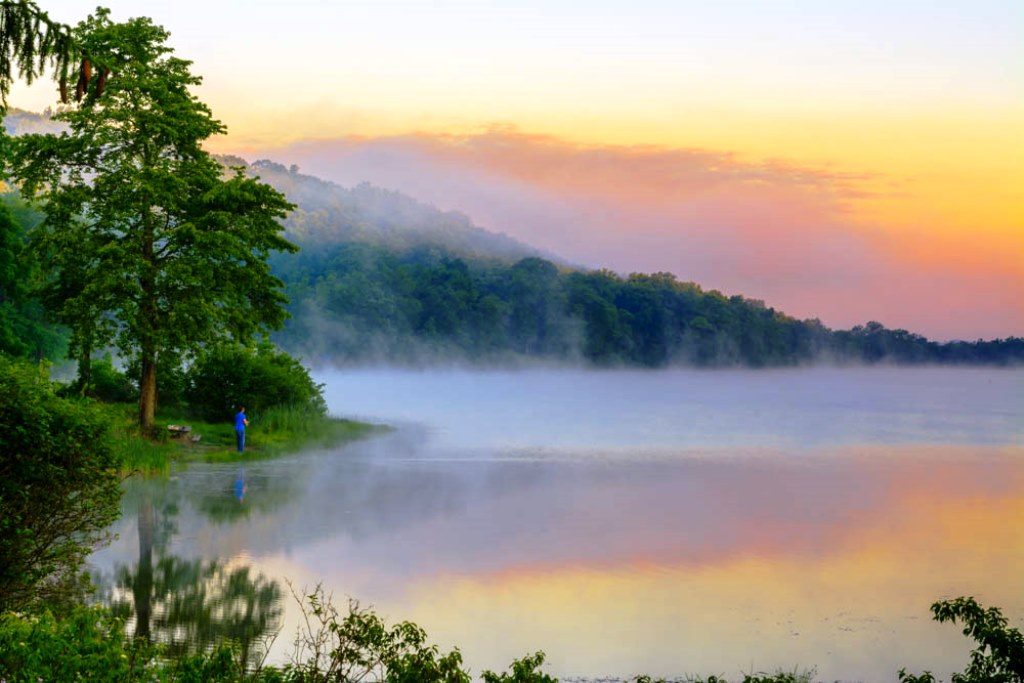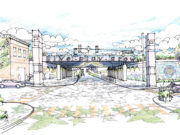In 1893, Pennsylvania was “practically devoid of trees, vulnerable to wildfires, massive flooding, soil erosion and degraded water quality,” says Marci Mowery, longtime president of the Pennsylvania Parks & Forest Foundation (PPFF). “[It was] a landscape that some called a desert.”
This month, Mowery’s organization is marking the 125th anniversary of the Commonwealth’s state parks and forest system with a slate of public programming and a forthcoming report that will underscore the value of parks and forests, and call for significant public investment.
But first a little history, courtesy of PPFF. At the turn of the last century and in the midst of the Industrial Revolution, “Pennsylvanians cut, mined, quarried, hunted, fished and harvested, leaving in their wake unbelievable devastation. Polluted air and waterways, denuded forests, impoverished soils, extinct and disappearing plant and animal life motivated citizens to embrace an interest in conservation that they believed would restore the state’s environmental health.”

A bill signed in 1893 established the PA Forestry Commission to control forest fires and create a forest reserve system. Its first purchase was 7,500 acres in Clinton County. In the same year, the first state park, Valley Forge, was established.
Today, the Commonwealth has 121 state parks encompassing nearly 300,000 acres; the state forest system comprises 2.2 million acres in 48 of Pennsylvania’s 67 counties.
Over the years, advocates have continued to make forceful arguments for why parks and forests matter.
For one thing, outdoor activity and recreation are healthy and stress reducing. (Joseph Rothrock, Pennsylvania’s first forestry commissioner, practiced medicine and “spent much of his life outdoors because of its healing properties,” reports PPFF.) In its upcoming report, due in July, PPFF will document how parks and forests promote physical and mental health, enhance social bonds and improve the overall quality of life, a key factor in business site-selection.
Our goal is to ensure that your children, and your grandchildren, have as good, if not better, an environment and access to parks and forests as we did.Marci Mowery, Pennsylvania Parks & Forest Foundation
Parkland and forests also provide environmental benefits including water treatment, air purification, groundwater recharge and erosion reduction, and they act as “carbon sinks” to absorb greenhouse gases. Trees also are proven to mitigate the short- and long-term impacts of climate change.
In addition, the state’s parks and forests have a significant economic impact. A 2012 Penn State study, commissioned by the state’s Department of Conservation and Natural Resources (DCNR), found that 37.9 million visitors to state parks in 2010 generated $1.145 billion and supported more than 12,000 jobs. (The same report also found that every dollar invested by Pennsylvania taxpayers in the state parks returned nearly $12.41.)
A 2015 study for VisitPA found that $6.9 billion in PA tourism industry sales were associated with recreation (indoor and outdoor). PPFF also cites a 2015 Department of Community and Economic Development (DCED) report — it found that the outdoor recreation industry employed 219,000 Pennsylvanians, more than three times the natural gas industry.

Still, according to Mowery, there are significant challenges to a system riddled with aging infrastructure, and suffering from years of deferred maintenance and chronic underfunding. The July report will include a call for $1 billion in infrastructure investment (in addition to the organization’s existing $10 million list) ranging from water and sewer upgrades, to dam repairs, to bridges and roads.
“Investing in these repairs now will save millions of dollars down the road and protect human safety,” she says.
DCNR Secretary Cindy Adams Dunn acknowledges the infrastructure needs. Of 864 bridges, 200 are structurally deficient, and the department is determining the cost of remediation over five years. Similarly, she says that DCNR is evaluating 46 “high hazard” dams.
“We always prioritize health and safety projects first, then critical public service projects,” explains John W. Norbeck, Pennsylvania’s deputy secretary for Parks and Forestry. He cites both the $15 million, 18-month rehabilitation of the dam at Chapman State Park in Warren County (“in critical need…in light of its age and climate-change-induced, more-intense storms”) and the redevelopment of Ryerson Station State Park in Greene County, where a compromised dam is being removed and a historic stream bed restored to create new fishing and boating opportunities; that project also includes a redesigned campground and a new swimming pool.

“125 years ago…the need to do something was so very apparent,” says Mowery. “While we may be more environmentally aware in this decade, we also tend to take things for granted — water flows when we turn on the spigot, for one example. In some ways, it makes the job of conserving these precious resources even more difficult, particularly when there are some folks who don’t see value in lands unless they are being drilled, developed, manipulated, etc. It’s hard for some to understand that a forest protects water quality much better than treating water, and at less expense.”
Another challenge is keeping up with the needs of Pennsylvania’s aging population, which involves improved access to trails and other amenities for the mobility impaired.
“We have an aging state and one with changing demographics,” she says. “How do we accommodate changing recreational needs on these conserved public lands?”
“Our goal,” she adds, “is to ensure that your children, and your grandchildren, have as good, if not better, an environment and access to parks and forests as we did.”
Lead image: Gifford Pinchot State Park / photo: Josh Wisotzkey



